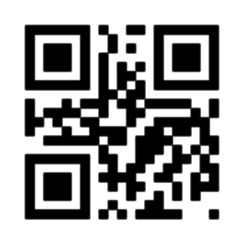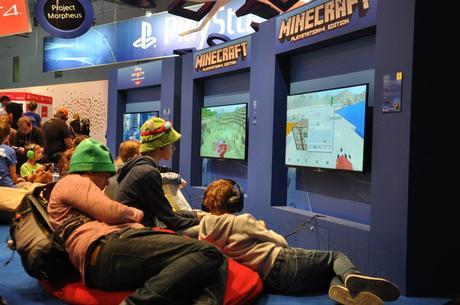While critics show photos of groups of people each staring at their own devices, anyone who has encountered a "Poképatch" (a group of players standing around a Pokéstop) will know that a lot of communication is taking place, with even "Pokédates" becoming a thing. Looking at the Australian curriculum, the general capability priorities such as critical and creative thinking, personal and social capability and, of course, ICT, could also be taught using Pokémon Go as students manage their school and social lives, build relationships with others, work effectively in teams and make responsible decisions. As this game is not played from behind closed doors, it even encourages conversations about personal safety. Discussions about the intersection between reality and the virtual world and digital etiquette are easy to imagine.
Despite its popularity, it has received significant negative media attention, with reports of people Playing computer games can be seen as an opportunity to improve students' academic performance, with Game-based learning is another way popular digital games can be harnessed to teach 21st-century or Minecraft, for example, has and continues to be Pokémon Go makes game-based learning even more accessible as it harnesses technology that the majority of people While critics show photos of groups of people each staring at their own devices, anyone who has encountered a "As this game is not played from behind closed doors, it even encourages conversations about personal safety. Discussions about the intersection between There are already apps such as By Amber McLeod, Monash University and Kelly Carabott, Monash University
Pokémon Go has already had over 100 million downloads since it launched in July.falling off cliffs, crashing cars and trespassing. The game has even been attacked for turning users into anti-social zombies.
Yet there could be more positive aspects to the phenomenon if we look past its entertainment value and the moral panic some have attached to it. For instance, how could we potentially harness this app, and the technology associated with it, to support education?
Pokémon Go is not the first augmented reality (AR) app, but it is by far the most popular.
Unlike virtual reality, which replaces or simulates reality, AR takes reality and adds something to it.
Bar codes, QR codes, Viewa - which allows readers to watch videos related to magazine content by scanning the page with their phones - and sound-recognition apps such as Shazam are all examples of AR that have been embraced by society.

In education, AR has already been employed to make otherwise difficult concepts, such as the structure of DNA or the inner workings of the heart, more accessible.
We know that effective teaching is more than a teacher in front of a whiteboard disseminating information. Learning occurs through problem-solving, enquiry and by working collaboratively with teachers and peers in a student-centred approach.
Experiential learning pedagogy advocates involving all the senses in hands-on, practical education, integrating aspects of more than one discipline in the task and ensuring the learning incorporates student interest as well as developing skills such as creativity, communication and digital competence.
All these factors help students see the relevance of their education and keep them engaged and motivated. Apps like Pokémon Go could be used to advance this agenda.
studies reporting an increase in maths and science scores among regular players.
Gaming in the classroom
enterprise skills in classrooms; even decisions about in-app purchases address financial literacy.

used in classrooms to teach concepts such as deforestation, sustainability, communication, problem-solving and teamwork.
Pokémon Go has a big fan base among school students and it is clearly keeping them engaged. It can be used as a stimulus for a wide variety of topics over a number of year levels. Pokémon Go is a pedometer, GPS, data collection and journalling tool, and requires maths skills to play. These features can be employed to link playing the game with student learning and the curriculum.
already have in their pockets.
- whole-class discussions of how the movement of tectonic plates has affected GPS readings in Australia (science, geography, English)
- photographing both real insects and virtual Pokémon and then writing up Pokédex entries for the insects they have collected (science, media studies, ICT, English, art)
- designing classification flowcharts for Pokémon as a lead-up to classification of animals (science, English, maths)
- assigning students the job of Pokéstop tour guide (Pokéstops are often positioned in front of historical locations), requiring them to research and report on the history of the area (history, art, English)
- framing maths problems around the data available for each Pokémon such as height, weight and strength. For example, if I have 3,700 stardust, what combination of Pokémon can I power up that will use up all my stardust? Or Asha's house is 600m from school. The only time she plays Pokémon Go is as she walks to and from school every day. How many days will it take her to hatch a 5.0km egg?
Some of the potential curriculum links are:
Looking at the Australian curriculum, the general capability priorities such as critical and creative thinking, personal and social capability and, of course, ICT, could also be taught using Pokémon Go as students manage their school and social lives, build relationships with others, work effectively in teams and make responsible decisions.
Poképatch" (a group of players standing around a Pokéstop) will know that a lot of communication is taking place, with even " Pokédates" becoming a thing.

reality and the virtual world and digital etiquette are easy to imagine.
Add that to existing technology such as Google Glass and you can imagine a world where students visit the zoo on a school excursion and have been asked to research an animal of their choice for a class presentation.
As Mia approaches the elephant enclosure, information about what she sees appears before her eyes. She looks at some carrots and data about how much food an elephant eats in a day appears. She turns her gaze to the elephant's tusks, and a video about poaching plays. As she pulls her focus out to see the whole elephant, an interactive hologram of the animal floats before her eyes, allowing the student to explore features such as the elephant's DNA or digestive system.
Blippar that allow people to use phones to scan their environment. The app recognises objects (such as your shoe, a phone, the Eiffel Tower) and instantly finds webpages that can provide more information (such as where you can buy it, how it works or its history).
Content becomes immediate and relevant to students as they take charge of their own learning.Apps, games and technologies such as Pokémon Go should be approached with an open mind as they offer many potential avenues to employ an engaging, student-centered approach to education.
 About Today's Contributors Amber McLeod, Lecturer in Education, Monash University and Kelly Carabott, Assistant Lecturer, Faculty of Education, Monash University., Monash University
About Today's Contributors Amber McLeod, Lecturer in Education, Monash University and Kelly Carabott, Assistant Lecturer, Faculty of Education, Monash University., Monash University

